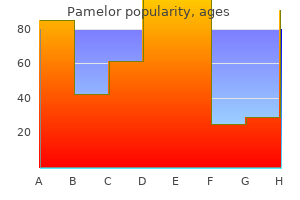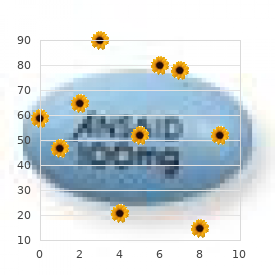Brett David Atwater, MD
- Associate Professor of Medicine

https://medicine.duke.edu/faculty/brett-david-atwater-md
These efforts have advanced the reliability of psychiatric diagnoses to standards similar to those of other disciplines anxiety symptoms vs adhd symptoms purchase pamelor in united states online. Latency to rapid eye movement sleep is correlated to clinical symptoms of depression anxiety pregnancy quality 25mg pamelor. The effect of antipsychotic and antidepressant drug treatments can be correlated to symptom reduction anxiety disorder definition 25 mg pamelor fast delivery, cerebral blood flow anxiety 40 weeks pregnant buy pamelor amex, and brain metabolite ratios. Therefore, epidemiological studies produce high rates of comorbid psychiatric conditions, especially if subjects are monitored longitudinally rather than cross-sectionally (lifetime or 12-month prevalence vs. These are consequences of criteria-based classification that need to be accounted for in selecting subjects for research and treatment. Subjects with a primary anxiety disorder may develop a secondary depression, causing them to seek treatment. Anxiety subjects may also self-medicate with alcohol and other substances that are anxiolytic and be diagnosed with a substance use disorder. A patient with schizophrenia may develop a depression, and unless that is properly diagnosed the antipsychotic medication may be unnecessarily increased. A patient with recurring depressive episodes may eventually develop a manic episode, thus altering the diagnosis from unipolar depression to bipolar disorder. Since subjects with schizophrenia tend to seek various drug effects, the effects of cannabis or alcohol may cause psychiatric symptoms per se. Personality, cognitive style, and social attitudes are moderately or highly heritable according to adoption and twin studies. There is even a genetic contribution to being religious or antisocial, and to the amount of time spent watching television! Personality traits are stable and genetically determined throughout life, and are modifiable only by serious effects such as a neurodegenerative disease, severe substance use, a traumatic brain injury, a brain tumor, or a severe generalized medical condition. One such famous case is Phineas Gage, a railroad worker who survived an iron rod that passed through his frontal lobes in 1848 and caused a pronounced personality change. There have been many theories since Hippocrates to explain how personalities are shaped. Personality disorders occur in about 10 per cent of population samples, and in about a third of clinical samples. A patient with a serious axis I disorder may qualify for a personality disorder diagnosis. A subject with high-functioning autism or Asperger syndrome may be regarded as having a schizotypal personality disorder. For example, a patient with diabetes mellitus who has taken too much insulin may present confused or agitated in the emergency room because his blood sugar is too low. A patient with hypothyroidism or hyperthyroidism or hyperparathyroidism usually has anxious or depressive symptoms. Patients with acute intermittent porphyria may become psychotic, and are always anxious. Depression is known as a risk factor for acute myocardial infarction, and can add to the risk of cardiovascular complications. Premenstrual dysphoria is an intermittent cluster of symptoms among which irritability and dysphoria are the most disturbing. It develops following ovulation and reaches a peak until menstruation occurs, obviously governed by hormonal variations across the menstrual cycle. Multiple sclerosis can present with psychotic symptoms and mood elevations including euphoria. Pernicious anemia (deficiency of vitamin B12) may present with depressive symptoms, memory deficits and sometimes confusion. The scientific community assumes that there is a molecular basis for psychopathology, and that symptoms are produced that can be elicited, quantified and classified by interviewing and observing a subject. This medical model was critiqued in the 1950s and 1960s, causing thought leaders to argue for external causation rather than disorders of the brain. Sane political dissidents in the Sovjet Union were sentenced by courts to be diagnosed and incarcerated in mental asylums and given tranquilizers (for some this may have been a better alternative than imprisonment). Early support for the medical model came from twin studies that showed a strong genetic contribution to schizophrenia and bipolar disorder. Neurosyphilis, first defined in 1672, and thought to be an immoral disease, was determined to be an infectious disease in 1913. The Austrian psychiatrist Julius Wagner-Jauregg was awarded the Nobel Prize in 1927 for having shown that neurosyphilis could be treated by infecting the patient with malaria, and in 1943 patients began treatment with penicillin. The equally dramatic effect of chlorpromazine on delusions and hallucinations in schizophrenia was also discovered in the 1950s. Klein that imipramine could extinguish panic attacks, previously believed to stem from unconscious parental conflicts. The model has proven useful in that the benefits and hazards of psychotherapies and psychotropic medications have been shown in randomized controlled trials for which subjects with these diagnoses have been selected. Good Clinical Practice, the code by which treatment studies are undertaken, assumes that subjects are selected based on structured diagnostic interviews and that validated measures of changes in symptoms and functioning are applied (see below). The courts pronounce verdicts on forensic psychiatric assessments that are based on the medical model. The medical model is the basis for clinical research into the genetics, etiology, pathogenesis, epidemiology, treatments, and outcomes of psychiatric disorders. The medical model is often poorly understood by lay persons in politics, administration and the media. It is attacked by the scientology movement and other antipsychiatric movements that refuse to acknowledge the scientific basis for psychiatric disorders. No wonder that the public is so confused, and that stigma against psychiatric disorders is so prevalent in many societies. Traditional medicine this paragraph is a brief excursion into the domain of traditional medicine and how it relates to psychiatric diagnoses. The overwhelming majority of the world population will primarily be diagnosed and treated in traditional medicine that was developed locally by indigenous peoples: Traditional medicine is the sum total of the knowledge, skills and practices based on the theories, beliefs and experiences indigenous to different cultures, whether explicable or not, used in the maintenance of health as well as in the prevention, diagnosis, improvement or treatment of physical and mental illness. Diagnoses are flexible from one day to another, and based on listening, observing, questioning, and pulse-taking. Religious healers, although forbidden, may apply fortunetelling, handwriting analysis, and palm-reading. Another is koro (an excessive fear of genitals and breasts shrinking back into the body). Healers name it spirit illness, and prescribe offerings and rituals at the temple and at home. There is a period of absolute rest, then a period of light work, followed by a period of normal work. In studies more than one half of all patients, including those with schizophrenia, had seen a traditional healer or shaman (yuta) before seeking psychiatric treatment. Taijin Kyofosho (anthropophobia, phobia of eye contact) is a culture-bound syndrome, rooted in consideration for others, loyalty to the group, protecting a vertical society, mutual dependence, a sense of obligation, and empathy. A young person with ukuthwasa is a candidate to become a traditional healer, as he/she can communicate with ancestors, and resisting such a calling may cause illness. There is often a family history of schizophrenia and other psychiatric disorders among those with ukuthwasa. In the United Kingdom, South Asian patients, including Muslims from Pakistan, frequently seek traditional healers (hakims), practicing Unani Tibbia that stems from Jundishapur south of Teheran. Psychiatric disorders are treated with herbs, diets, and amulets with holy words from the Koran, or the patient is referred to a mullah. African-Caribbean patients employ counter-measures including religious rituals and magic (Obeah witchcraft), having consulted divine healers from the Pentecostal or other churches. In Italy, the Catholic Charismatic Renewal, sanctioned by the Pope, stems from the Pentecostal cult and includes 300 000 believers.
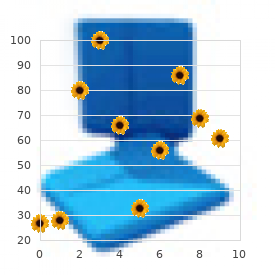
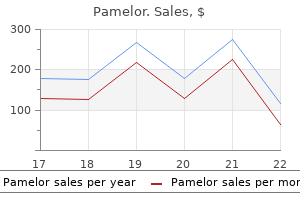
Causes may be any infection anxiety symptoms in young males buy pamelor 25 mg online, gastric outlet obstruction kitten anxiety symptoms order generic pamelor line, smoking anxiety symptoms lump in throat purchase generic pamelor online, or ingestion of substances like garlic anxiety problems purchase pamelor 25 mg with visa, onion, alcohol. Treatment possibilities include attention to orodental hygiene, adequate fluid intake, treatment of oral candidiasis, use of mouthwashes. The prevalence of anxiety and depression is about 77% in those with advanced disease261. These patients should be treated with supportive therapy, hypnosis, relaxation therapy, and pharmacological drugs. Overall about 70% of patients in developing and underdeveloped countries present in advanced stages of disease, where adequate symptom control and comfort of the remaining life should be the aim of treatment. Recent developments that are important to oncology practice are: the role of artificial nutrition; management of malignant small bowel obstruction; communication tasks, recognition of patient preferences, advanced-care planning and bereavement care. Newer centers for palliative care of cancer patients need to be made available and the public should be made aware in this regard as a form of treatment option. Re-staging according to initial work-up should be considered in the event of disease relapse or progression263. It is advisable to open every cholecystectomy gallbladder specimen to look for any suspicious mass lesion/thickeneing and intraoperative frozen section if facilities and the necessary expertise are available. If the requisite expertise is not available, the patient should be referred to a higher centre. Institutional policies vary from adjuvant Gemcitabine/fluoropyrimidine based chemotherapy to fluoropyrimidine chemoradiotherapy. Population-based study to estimate prevalence and determine risk factors of gallbladder diseases in the rural Gangetic basin or North India. Epidemiologia Descriptiva del Cancer Diagestivo en Chile (1982-1991): Una Aproximacion desde la Mortalidad. Number and size of stones in patients with asymptomatic and symptomatic gallstones and gallbladder carcinoma: a prospective study of 592 cases. Prevalence and risk factors for gallbladder neoplasia in patients with primary sclerosing cholangitis: evidence for a metaplasia-dysplasia-carcinoma sequence. Systematic population-based assessment of cancer risk in first-degree relatives of cancer probands. Familial liver and gall bladder cancer: a nationwide epidemiological study from Sweden. Diabetes mellitus and increased risk of biliary tract cancer: systematic review and meta-analysis. Abdominal obesity, weight gain during adulthood and risk of liver and biliary tract cancer in a European cohort. Medical history and the risk of biliary tract cancers in Shanghai, China: implications for a role of inflammation. Is it necessary to perform prophylactic cholecystectomy for asymptomatic subjects with gallbladder polyps and gallstonesfi Primary gallbladder cancer: recognition of risk factors and the role of prophylactic cholecystectomy. Cholecystectomy in patients with asymptomatic gallstones to prevent gall bladder cancer-the case against. Completion redical surgery after cholecystectomy for accidentally undiagnosed gallbladder carcinoma. Jaundice predicts advanced disease and early mortality in patients with gallbladder cancer. Primary gallbladder carcinoma: Imaging findings in 50 patients with pathologic correlation. Positron-emission tomography with fluorine 8-2-deoxy-d-glucose for gallbladder cancer diagnosis. The role of staging laparoscopy in gallbladder cancer: an analysis of 409 patients: a prospective study to evaluate the role of staging laparoscopy in the management of gallbladder cancer. Evidence-based gallbladder cancer staging: changing cancer staging by analysis of data from National cancer Database. Gallbladder adenocarcinoma: evaluation of the prognostic factors in 100 resectable cases in Brazil. Clermont D: Lymphatiques des voie biliaire: Cancer de la vesicule (anatomie pathologique et traitement chirurgical). Ito M, Mishima Y, Sato T: An anatomical study of the lymphatic drainage of the gallbladder. Karlmark E: Die lokalisationstendenz bei metasatasierung durch die venen in die leber. Frauenschuh D, Greim R, Kraas E: How to proceed in patients with carcinoma detected after Laparoscopic cholecystectomy. Lundberg O, Kristoffersson A: Open versus laparoscopic cholecystectomy for gallbladder carcinoma. Wakai T, Shirai Y, Hatakeyama K: Radical second resection provides survival benefit for patients with T2 gallbladder carcinoma first discovered after laparoscopic cholecystectomy. Laparoscopic for gallbladder carcinoma: Results of a Japanese survey of 498 patients. Benoist S, Panis Y, Fazniez P-L, the French University Association for Surgical Research. Lymph node involvement as prognostic factor in gallbladder cancer: location, count or ratiofi Patterns of Failure and Determinants of Outcomes Following Radical Re-resection for Incidental Gallbladder Cancer. Early-stage gallbladder cancer in the Surveillance, Epidemiology, and End Results database: effect of extended surgical resection. Drouard F, Delamarre J, Capron J: Cutaneous seeding of gallbladder cancer after laparoscopic cholecystectomy. Araida T, Higuchi R, Hamano M, Kodera Y, Takeshita N, Ota T, Yoshikawa T,Yamamoto M, Takasaki K. Should the extrahepatic bile duct be resected or preserved in R0 radical surgery for advanced gallbladder carcinomafi Prediction model for estimating the survival benefit of adjuvant radiotherapy for gallbladder cancer. Adjuvant external-beam radiotherapy with concurrent chemotherapy after resection of primary gallbladder carcinoma: a 23-year experience. Adjuvant therapy in the treatment of biliary tract cancer: A systematic review and meta-analysis. Takada T, Amano H, Yasuda H, Nimura Y, Matsushiro T, Kato H, Nagakawa T,Nakayama T; Study Group of Surgical Adjuvant Therapy for Carcinomas of the Pancreas and Biliary Tract. Adjuvant radiation therapy is associated with improved survival for gallbladder carcinoma with regional metastatic disease. Comparison of 5-fluorouracil, doxorubicin, and mitomycin with 5-fluorouracil alone in the treatment of pancreatic-biliary carcinomas. Weekly gemcitabine plus 24 hour infusion of 5-fluourouracil/leucovorin for locally advanced or metastatic carcinoma of biliary tract. Patient-reported outcomes of patients with advanced biliary tract cancers receiving gemcitabine plus capecitabine: a multicenter. Chemotherapy improves survival and quality of life in pancreatic and biliary tract cancer. Best supportive care compared with chemotherapy for unresectable gall bladder cancer: A randomized controlled study. Chemoradiation for unresectable gallbladder cancer: time to review histiric nihilismfi Neither neoadjuvant nor adjuvant therapy increases survival after biliary tract cancer resection with wide negative margins. Impact of Nausea and Vomiting on Quality of Life in Cancer Patients during Chemotherapy. Economics and health-related quality of life in antiemetic therapy: recommendations for trial design. Essential: Rare minimum that should be offered to all the patients by all centres treating patients with cancer. Department Common of Health and to treat problems of the bile and pancreatic bile duct Human Services ducts.
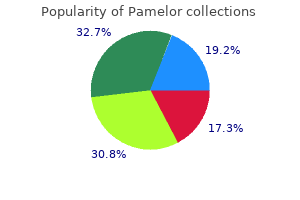
Consult with the pathologist (who may want to be there when the specimen is obtained) c anxiety symptoms feeling hot purchase pamelor pills in toronto. False negatives can occur if insufficient material anxiety jelly legs buy pamelor in united states online, material not handled properly or preparation delayed anxiety symptoms for hours buy pamelor with a visa, or if treatment has altered the cellular material Q anxiety zinc order pamelor online. Angiotensin-converting enzyme: clinical applications and laboratory investigations on serum and other biological fluids. Interferometric techniquereflected light is analyzed to produce a cross section of tissue B. Adequate pupillary dilation may be problematic if posterior synechiae present 2. Identification of morphological changes in tissue layers atrophy, thickening, distortion 2. Interpretation of changes in the relative reflectivity of tissue layers hyporeflectivity, hyperreflectivity 3. Serous retinal detachments with fibrin bridges i) Can be used to quantitatively follow treatment efficacy iii. Optical coherence tomography: a key to the future management of patients with diabetic macular oedema. Uveitic macular oedema: correlation between optical coherence tomography patterns with visual acuity and fluorescein angiography. Intravenous dye injection (5 cc of a 10% solution in adults followed by a flush of saline) C. Start timer with dye injection and measure arm to eye time and monitor transit phase in eye of greater clinical interest E. Capture photographs at frequent intervals immediately following the injection of the dye until the dye disappears from the blood vessels (late phases, typically > 10 minutes after injection) F. Anaphylactic reactions (cardiovascular shock): less than 1 in 100,000 injections F. Retinal vascular staining must scan periphery retinal vasculitis, birdshot uveitis E. It can be detected with specialized infrared video angiography (modified fundus cameras, digital imaging system, scanning laser ophthalmoscope) V. Choroidal neovascularization: is seen as a focal "hot spot", plaque, or combination of both B. Appear about 10 minutes after dye injection and persist throughout the remainder of the study b. Larger and greater in number than the white dots seen clinically and by fluorescein angiography E. Multiple hypofluorescent spots (foci of lymphocytic infiltration) Additional Resources 1. Search for skin lesions consistent with sarcoidosis that might give a higher diagnostic yield 2. Bartonella henselae serum immunoglobulin (Ig)G and IgM in suspected cat scratch disease D. Biopsy of other involved tissue such as skin, lung, parotid or lacrimal or minor salivary gland B. Identify an appropriate lesion potentially consistent with conjunctival sarcoid (blind biopsy of conjunctiva has very low diagnostic yield and is not recommended as a screening tool in the absence of a nodule) B. Place specimen flat (to avoid rolling of conjunctiva) on a substance like filter paper F. To rule out other causes of granulomatous disease (eg foreign body, mycobacterium, fungal diseases) since sarcoid is a diagnosis of exclusion 2. Sufficient quantity to allow clonality testing (via flow cytometry) and cytogenetics I. Linear basement membrane staining in ocular cicatricial pemphigoid (linear IgA, IgG, and complement staining along the basement membrane zone) J. Subconjunctival hemorrhage prevention includes avoiding anti-platelet agents pre-operatively B. If diagnostic, then appropriate therapy depending on etiology Additional Resources 1. Conjunctival lymphoid tumors: clinical analysis of 117 cases and relationship to systemic lymphoma. Uveitis where neoplastic or infectious disease are suspected (either due to the clinical appearance or to failure to respond to conventional therapy) a. Viral infection (Herpes simplex, herpes zoster, cytomegalovirus, Epstein Barr, human herpesvirus-6) c. Involve the pathologist before collecting the specimen to be sure of proper specimen handling and delivery 2. Once the pure vitreous aspirate has been obtained, syringe is capped and should be given immediately to the pathologist (who should be informed of the procedure and the differential diagnosis being considered). The cells in these vitreous specimens are particularly susceptible to rapid degradation and death. Clear communication must exist between the cytopathologist and ophthalmologist regarding the differential diagnosis being considered 2. Molecular studies for gene rearrangement for diagnosis of lymphoma (IgH gene rearrangement) (must request in advance to be certain that laboratories can perform studies requested) 4. Pre-procedure clinical suspicion impacts selection of tests and ultimate diagnostic yield C. If the biopsy reveals infectious agent, the patient should be treated for the infection May require infectious disease expert in cases of systemic infection. Microbiologic yields and complication rates of vitreous needle aspiration versus mechanized vitreous biopsy in the Endophthalmitis Vitrectomy Study. Sight-threatening chorioretinitis of unknown etiology involving one eye or both eyes a. Includes cases with an atypical presentation, inconclusive system work up, inadequate response to conventional therapy c. Useful to distinguish between cases of suspected infection or malignancy in which the biopsy has the potential to alter management 3. Disease in which there is a reasonable expectation that vitreous biopsy would provide sufficient material for cytologic examination 2. Chorioretinitis in which there is reasonable expectation that culture, or polymerase chain reaction analysis or antibody determinations of ocular fluid would be sufficient to make the diagnosis 3. Usually, prior attempt at intraocular diagnosis with analysis of vitreous humor obtained by pars plana vitrectomy (unless subretinal material can be easily obtained by aspiration) or aqueous humor obtained by anterior chamber paracentesis B. B-scan ultrasonography to evaluate extent of chorioretinal involvement prior to biopsy 2. Evaluate for surgical site that is easy to access and contains sufficient tissue i. Create plan for repairing retinal defect (pars plana vitrectomy, endolaser, internal tamponade (longacting gas, silicone oil in cases of severe retinopathy, possible scleral buckle)) c. Analysis of another involved tissue, such as skin, lung, cerebral spinal fluid, or brain if more appropriate in cases where there are systemic involvements B. Patients should be off from therapy with corticosteroids or immunosuppressive medications prior to having biopsy to maximize yield of pathologic cells B. Retinal biopsies are often small, difficult to partition and may contain necrotic tissue only C. Chorioretinal biopsy can separate during fixation making the relationship of the various layers difficult to interpret D. Autoimmune (commonly associated with seronegative Rheumatoid factor-negative spondyloarthropathies) c. Periods of disease quiescence off treatment are typically longer duration than episodes of acute disease i. Ciliary flush or bulbar conjunctival injection with quiet palpebral conjunctival surfaces 4. Posterior synechiae are common and often fully resolve with appropriate treatment 7. Skin rashes, particularly psoriasis, rash on palms or soles, nail bed abnormalities, genital skin abnormalities d.
Best pamelor 25mg. Spider-Man & Venom - Separation Anxiety (SNES) Music - Stage Theme 05.
